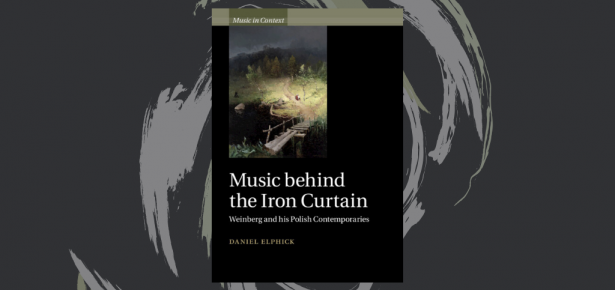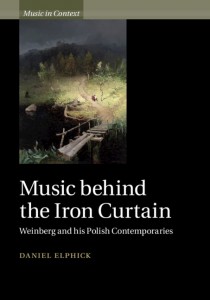
The fraught atmosphere of surveillance and intimidation has long made twentieth-century Russian music a fascinating area of study. Music audiences, performers, and scholars alike have been engrossed by the all-too recent time when the state directly interfered in matters of music-making and composers lived in fear. The Soviet Union was larger than just Russia, of course, and its sphere of influence extended even further: Music Behind the Iron Curtain expands the focus of study by examining the musical relations between the Soviet Union and Poland during the Cold War. The book has one key case study: the Polish-Jewish-Soviet composer, Mieczysław Weinberg.
Weinberg was truly a ‘citizen of nowhere’ before the term existed. He fled his native Warsaw in 1939, and gained a level of acceptance in the Soviet Union. His Jewish heritage marked him as an outsider in both countries, however, and he continued to experience anti-Semitism in his adopted country. Despite this, he became one of the most celebrated composers of his day. He wrote a huge amount of music; Music Behind the Iron Curtain provides an overview through his seventeen string quartets, which span his entire career. In Soviet music circles, Weinberg presents a fascinating case study. He was close friends with Shostakovich, and had his music performed by the likes of Rostropovich and Gilels. Yet, his status as an ‘outsider’ meant that his music was never chosen for international audiences, but remained almost solely within Soviet domestic consumption.
Weinberg was brought up in the Polish music tradition. After his move to the USSR, he adapted his musical style to include new influences. His Polish contemporaries forged ahead in an entirely new style, however – one that Soviet authorities attempted to shape as the Iron Curtain closed over eastern Europe. The book explores how Soviet authorities attempted to export the dictatorial aesthetic of ‘socialist realism’ to Poland, and the rapid failure that took place as a result. Following this, Polish composers drew international attention with their home-grown brand of avant-garde composition. Soviet authorities at first tried to dismiss this in various reports and press releases, featured in print for the first time in this book. When this failed to work, they resorted to outright denial and bans.
The most interesting case study in Music Behind the Iron Curtain covers Weinberg’s only return visit to Poland, as a guest of the 1966 Warsaw Autumn Festival of New Music. There, instead of a glorious homecoming, he was greeted with indifference, as Polish composers identified him with his Soviet comrades. Weinberg also realised that the city of his childhood had been almost entirely destroyed during the war. From that point on, he retreated into a kind of nostalgic memory of inter-war Poland, removed from any reality that remained.
Music Behind the Iron Curtain: Weinberg and his Polish Contemporaries provides an overview of Weinberg’s life and music, as well as the string quartets of other Polish composers, whose music shared the same DNA as Weinberg’s. The book provides an in-depth study of Soviet-Polish cultural relations and politics during the cold war, and raises questions about the national identity in considering the biographies of composers in general.
 Music behind the Iron Curtain: Weinberg and his Polish Contemporaries, is available now.
Music behind the Iron Curtain: Weinberg and his Polish Contemporaries, is available now.
Latest Comments
Have your say!